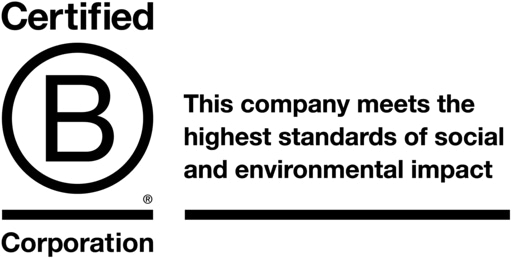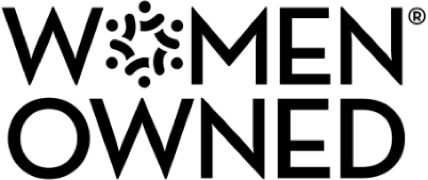How To Improve Ecommerce Product SEO
Although it seems like hundreds of products would be beneficial, since that means more pages and more traffic, it’s not always the case. The following are several different ways to improve product page SEO and increase traffic.
Product Descriptions
It’s important to use original content when writing your product descriptions. While it might seem easy to write a short sentence or two, or nothing at all, images cannot be seen by search engines and aren’t enough to get your site to rank. Too much content or copied content can hurt you as well. Make sure you keep the following in mind when creating your product pages:
- Consider unique content a requirement; quality descriptive content that is useful to the consumer helps with their purchasing decisions.
- Do not copy content from other sites and use it for your own. Google searches websites just as a human does, and can catch and penalize you for copied content, even if it’s from a manufacturer’s site.
- Make sure you have the right amount of content. It takes time, but your description should exceed the “default” page word count. That means any text on a blank product page, including the navigation text, sidebar, footer, etc., should not overpower the product description that you’re adding.
Even though descriptions need to be unique, they should also be consistent. Here is an example of basic formatting you can use:
- H1 – Include the brand of the product, product name, and item number that matches your title tags (only use one H1 heading tag per URL)
- H2 and H3 – Below the H1, include your keywords (i.e. womens, brown, leather, etc.)
- Intro paragraph – Brief description about your product (approx. 50 words)
- Bulleted list of features – List your product highlights (i.e. water resistant, durable, machine washable, etc.)
- Closing paragraph – Any additional information about your product not mentioned in the sections above (approx. 50 words)
If there is a situation where it’s necessary to use the same product description for several different products, you should also make sure these won’t be indexed by search engines. To do this, use robots.txt to block any areas of text (sorting elements, tags, etc.) that create duplicate content. Pages that are often the worst offenders are archives and category pages.
Product Reviews
User generated content, such as product reviews, can increase buyer confidence and also help create more unique content for your product pages. Google can tell if your site has become stagnant and will start to push your site down in the ranks. Reviews can help keep your pages fresh and updated more frequently, which is positive for your SEO.
Product Page Title Tags and Meta Descriptions
Similarly to your product description, your page title can also hurt your SEO if it’s not unique, doesn’t contain any of your keywords, or if it copies your other product pages. It can be hard to come up with unique identifiers for large inventories.
A formula that works well is: Brand — Model — Item.
For example, an ecommerce business that sell fireplaces could use the following structure for their product titles: “Monessen SimpliFire SF-WM70-BK 70″ Wall-Mount Electric Fireplace”
Although meta descriptions may not directly influence your ranking, it is sure to improve your click-through rate (CTR) from a search engine. They can also increase the chances of a conversion by showing the consumer exactly what to expect when they click the link.
Product Images and Videos
Since you only have 15 seconds to capture someone’s attention (According to data by Tony Haile of Chartbeat), slow load times will more than likely cause higher bounce rates and a poor user experience. It’s crucial that you only upload compressed images with reduced file sizes to improve loading times. Faster loads times can also relate to high search rankings.
Images also need to include “alt” tag information. Since search engines are unable to see the actual images, descriptive alt tag information can allow the images to be read and can also be used to insert keywords.
Videos are also a great way to offer more information to your consumer. They also demonstrate your product in action and help the buyer’s decision process. Just like images, videos also allow you to incorporate keyword-rich titles, tags, and descriptions.
Keyword Research
As you research ways to increase your rank for specific terms, it’s important to consider the following:
- relevancy
- search volume
- and ranking difficulty
Google AdWords offers a free keyword tool to show you how competitive your keywords may be and the local search volume. Choosing keywords that are too broad can cause high bounce rates and low conversions, while terms that are too competitive can take a long time to achieve desired ranking.
Keyword friendly URLs
Just like product titles, you want to ensure your product page URLs are keywords are search engine friendly. Your URL should be easy to remember, and should help customers know what to expect when they click on it. You should also make sure it doesn’t appear to be spam. A URL for our mock “Comfortable Blue Jeans” product page could look something like this:
…comfortableclothinginc.com/womens/pants/yt89c-comfortable-blue-jeans
Not only are well crafted URLs easier for your customers and more preferred by search engines, but they also make it easier for you in the future. If you start off with unfriendly URLs and decide to change them later, any indexes or bookmarks using the old URL will break, which will hurt your SEO and also make it difficult for someone to find again later on.
Social Interaction
Social share buttons are a great way to tell Google that your products are being found, that they’re popular, and that people consider the information on the product page valuable. Social shares also help increase buyer confidence, similar to product reviews, and can help boost conversion rates.
Out-of-Stock, Obsolete, and Expired Products
Deleting a page, even if the product is no longer available, is bad for SEO. When an item is out-of-stock and will be back in stock later, instead of deleting or hiding the page, consider offering highly relevant alternatives, such as: different color options, newer versions, or other products that match the original product’s quality and price.
If the product is not coming back, then consider redirecting the page with a permanent 301 that tells Google to reindex and rank the new page instead, or point the page to the parent category page. You could also reuse the URL if the product you offer doesn’t demand specific technical specs, or worst case scenario, permanently delete the page using a 410 status code to notify Google that the page has been permanently removed.
Link Building and Site Structure
Building an intuitive website structure can dramatically improve your website’s usability, SEO rankings, and conversion optimization. For ecommerce websites, it can be helpful to look at competing sites and their navigational structure. Product pages that are buried deep in the sitemap can get lost and decrease the overall rank.
To make individual product pages easier to find, add links to your category landing pages on your homepage. Your category landing pages should provide a list of products, or more specific categories. Using a logical progression from general categories to specific products allows Google to find, crawl, and index your website’s content faster.
Internal linking can also help boost your SEO. Internal linking is the practice of including links to other pages on your website where it’s appropriate. These can be used to increase SEO by adding keywords into the link anchor text that in turn helps with the ranking for those keywords. However, overuse of the same exact anchor text can cause undesired results. Internal linking on ecommerce sites is usually leveraged by offering related products to people while they view other products within your website.
If you haven’t already, you should submit a sitemap to Google through their free Webmaster Tools. Once you have verified your website with their generated code, it can crawl your entire website and index each page.
Interested in receiving monthly iBec Creative updates right in your inbox?
Sign up below and we’ll send you updates once a month. Our newsletters are known to contain: exclusive pictures of the iBec crew having fun, TikTok trends to get your creativity flowing, information on B Corp Certification, and so much more! There’s no limit to what you’ll find in an iBec newsletter.



